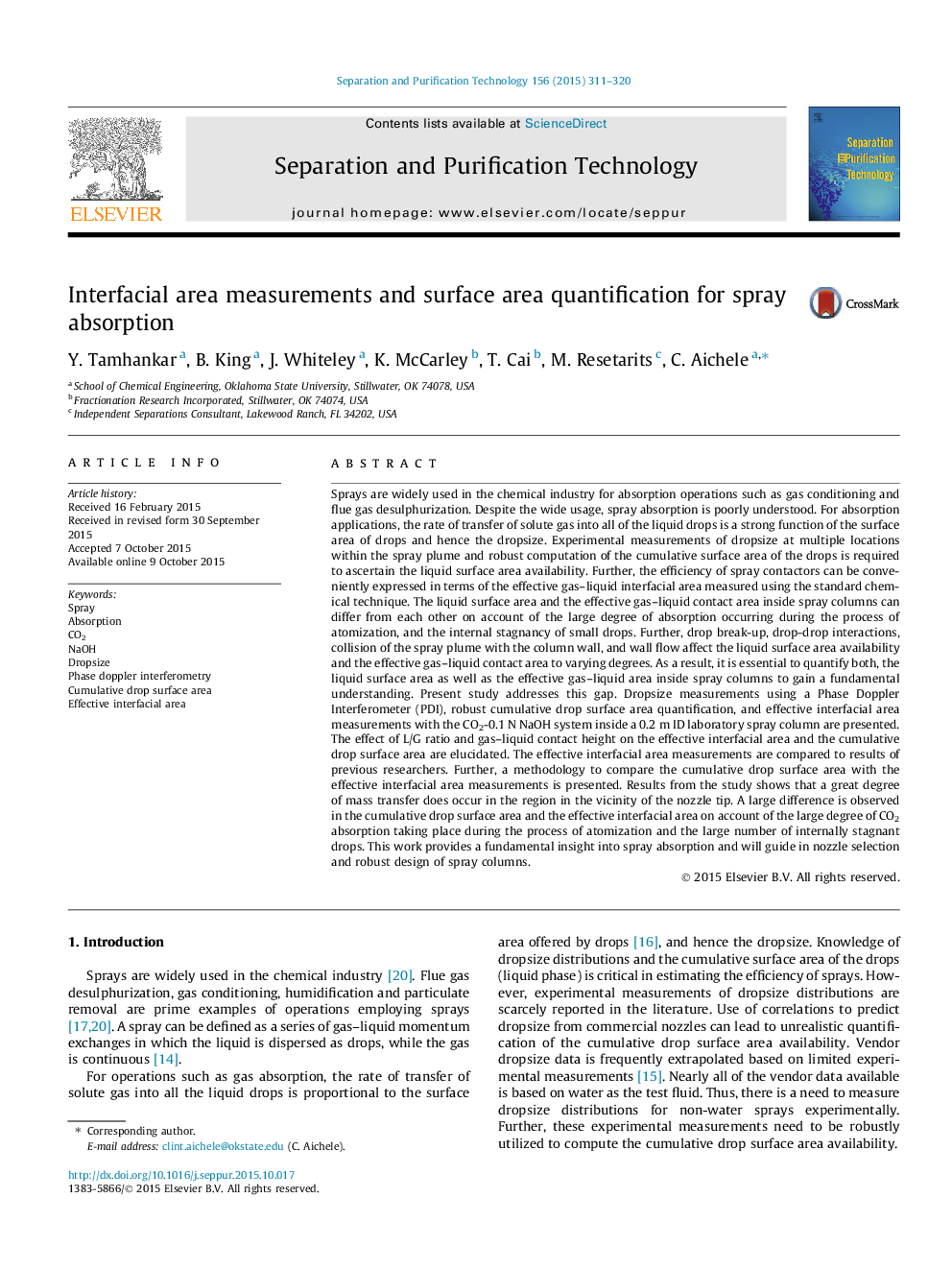| Article ID | Journal | Published Year | Pages | File Type |
|---|---|---|---|---|
| 10389688 | Separation and Purification Technology | 2015 | 10 Pages |
Abstract
Sprays are widely used in the chemical industry for absorption operations such as gas conditioning and flue gas desulphurization. Despite the wide usage, spray absorption is poorly understood. For absorption applications, the rate of transfer of solute gas into all of the liquid drops is a strong function of the surface area of drops and hence the dropsize. Experimental measurements of dropsize at multiple locations within the spray plume and robust computation of the cumulative surface area of the drops is required to ascertain the liquid surface area availability. Further, the efficiency of spray contactors can be conveniently expressed in terms of the effective gas-liquid interfacial area measured using the standard chemical technique. The liquid surface area and the effective gas-liquid contact area inside spray columns can differ from each other on account of the large degree of absorption occurring during the process of atomization, and the internal stagnancy of small drops. Further, drop break-up, drop-drop interactions, collision of the spray plume with the column wall, and wall flow affect the liquid surface area availability and the effective gas-liquid contact area to varying degrees. As a result, it is essential to quantify both, the liquid surface area as well as the effective gas-liquid area inside spray columns to gain a fundamental understanding. Present study addresses this gap. Dropsize measurements using a Phase Doppler Interferometer (PDI), robust cumulative drop surface area quantification, and effective interfacial area measurements with the CO2-0.1 N NaOH system inside a 0.2Â m ID laboratory spray column are presented. The effect of L/G ratio and gas-liquid contact height on the effective interfacial area and the cumulative drop surface area are elucidated. The effective interfacial area measurements are compared to results of previous researchers. Further, a methodology to compare the cumulative drop surface area with the effective interfacial area measurements is presented. Results from the study shows that a great degree of mass transfer does occur in the region in the vicinity of the nozzle tip. A large difference is observed in the cumulative drop surface area and the effective interfacial area on account of the large degree of CO2 absorption taking place during the process of atomization and the large number of internally stagnant drops. This work provides a fundamental insight into spray absorption and will guide in nozzle selection and robust design of spray columns.
Related Topics
Physical Sciences and Engineering
Chemical Engineering
Filtration and Separation
Authors
Y. Tamhankar, B. King, J. Whiteley, K. McCarley, T. Cai, M. Resetarits, C. Aichele,
